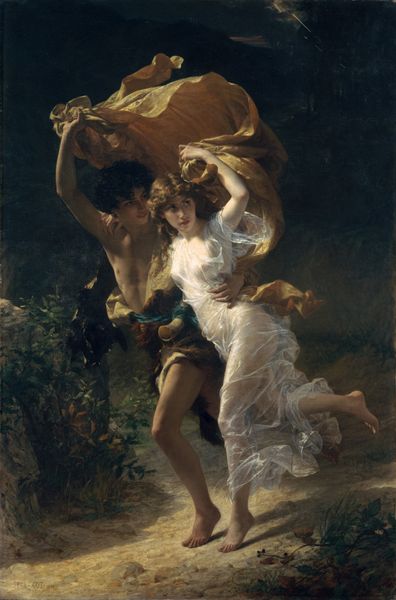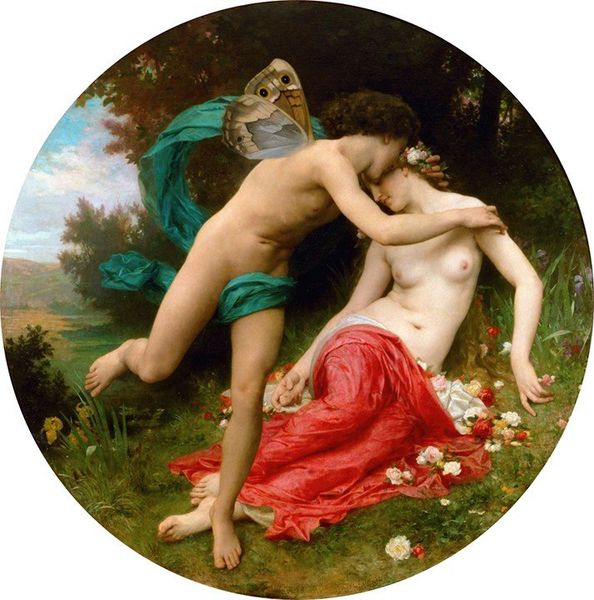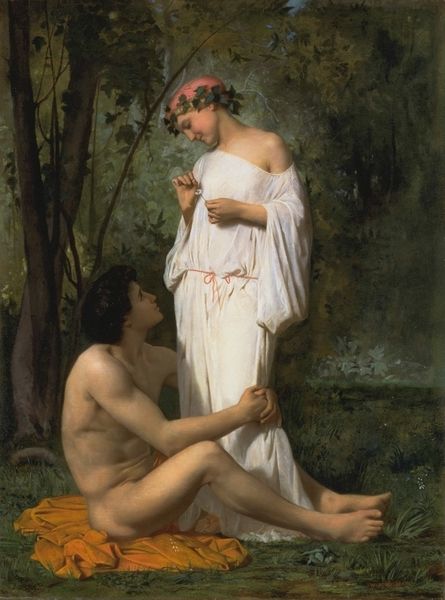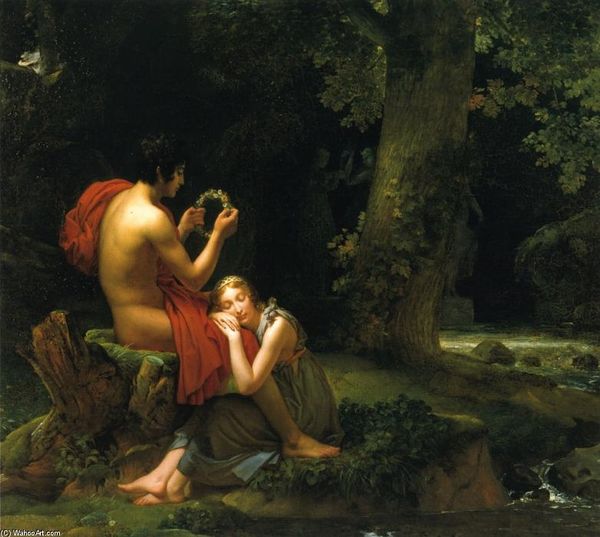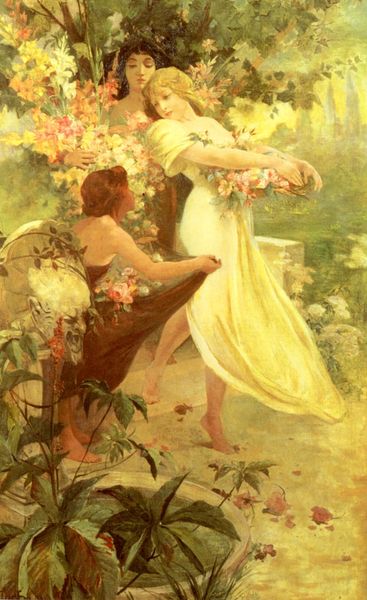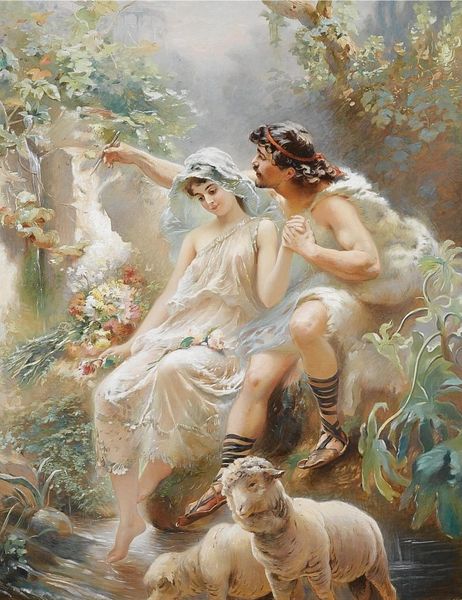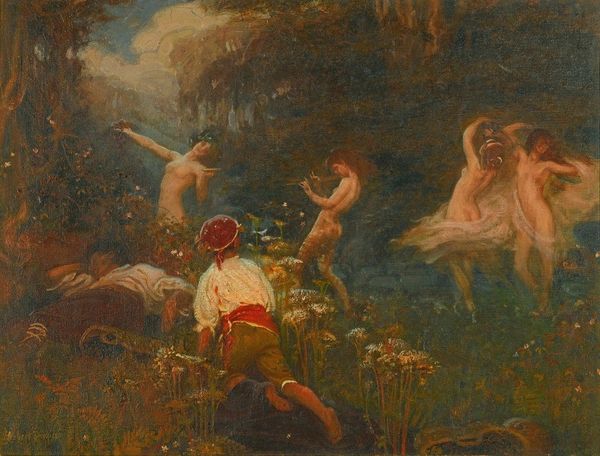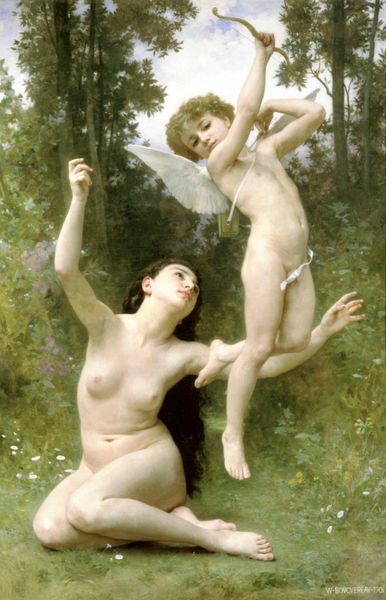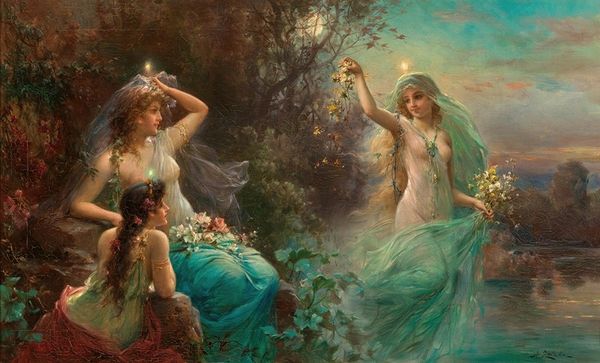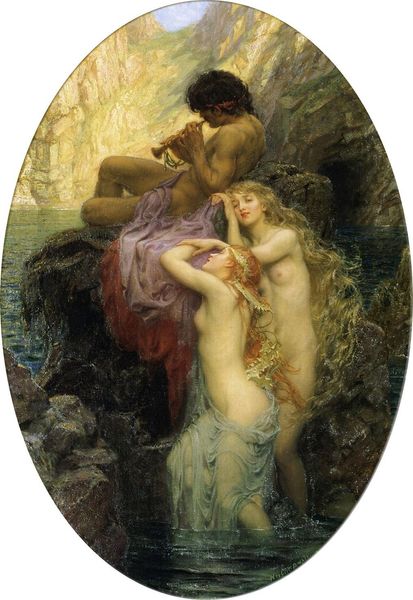
Copyright: Public domain
Curator: Pierre-Auguste Cot created this oil painting titled "Springtime" in 1873, exemplifying the Academic style of the time. What strikes you first about this piece? Editor: It’s an image of pure, unadulterated romance! The way the figures are entwined, almost weightless on that swing, evokes a carefree sensuality. The light seems to bathe them in an idyllic glow. Curator: Cot's painting became a popular symbol of youthful love, finding wide distribution through prints, tapping into the social appetite for romantic imagery in the late 19th century. What symbolic readings can you derive from this image of innocence and love? Editor: The swing itself represents a moment of joyful suspension, youth in bloom and promise of love, but also precarity of time. She, with her pallid dress, feels like a vision, barely tethered to the ground, to reality. They appear, with a bird observing them from above, to be at one with nature. It's a modern Venus and Adonis if you ask me. Curator: Cot expertly uses classicising forms – idealized figures, harmonious composition – but situates it within a genre scene of courtship. That blending of high art and relatable narrative contributed to its widespread appeal with the middle classes. Editor: Note also the absence of wedding bands or religious elements. Cot shows the pre-marital bliss, focusing on desire, an image celebrated as innocent even if undeniably charged. The garland on his body points at the beauty, the freshness of their union. It is very sensual. Curator: This approach aligns with the late 19th century art market which often prioritized accessible beauty and sentiment over more challenging artistic statements. Museums catered to that preference. Editor: Yes, "accessible beauty" is key, but also a romantic escapism. In times of fast growing cities and heavy industry, works like this transported viewers to simpler, perhaps imagined realities. The iconography points to nature's permanence and innocence of this romantic affection. Curator: "Springtime", in essence, tells a story about the desires and aspirations projected onto it, shaping our understanding of beauty, love, and the art world of its time. Thank you for adding such insightful symbolic readings. Editor: An absolute pleasure. The enduring fascination with works like "Springtime" demonstrates our constant quest for the idealized, the romantic, in art and life.
Comments
No comments
Be the first to comment and join the conversation on the ultimate creative platform.
